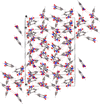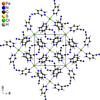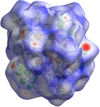issue contents
December 2023 issue

Cover illustration: 2-(2-Hydroxyphenyl)benzimidazoles are a class of photoluminescent ligands, the properties of which can be tuned through complexation to different metal centres. The present study discusses the synthesis and structural characterization of two new bi-nuclear complexes of Mn and Co with benzimidazole derivatives, stemming from a longstanding collaboration between the Laboratoire de Chimie de Coordination Organique (LCCO), University of Dakar, Senegal, and the National Crystallography Service (NCS), School of Chemistry, University of Southampton, UK. This collaboration is one of the many successful programmes (such as the IUCr Crystallography in Africa Initiative or the IUCr–UNESCO OpenLab network) to foster and promote crystallography throughout the African continent. The paper is also included in a special collection celebrating the recent founding of the African Crystallographic Association. See Orton, Diouf, Gueye, Gaye, Thiam & Coles [Acta Cryst. (2023). E78, 1109–1114].
research communications













































 journal menu
journal menu










































